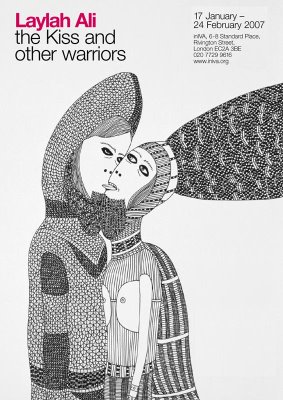

 "I’m thinking about formal portraits, but the portraiture that I’m thinking of when I’m making these encompasses a much bigger range than I’m thinking about right now. I’m thinking of them as distinct individuals who exist or who have existed. The idea is for the distinctness of that individual to come through and to speak in some way about a narrative that is not readily apparent. So something about the way the person is dressed or their setting or the weathering of their face tells you a story. The look in their eyes speaks of something larger. Think of society portraiture in the late 1800s, like a [John Singer] Sargent painting. He commissioned portraits of very wealthy individuals and you’re looking at the individual as much as you are at their dress, what they’re holding, what the setting is—the whole picture. With really amazing portraits, the painting of them also plays a role. The quality of paint and something about the eyes, those sorts of artistic decisions become an active part of really good portraits.
"I’m thinking about formal portraits, but the portraiture that I’m thinking of when I’m making these encompasses a much bigger range than I’m thinking about right now. I’m thinking of them as distinct individuals who exist or who have existed. The idea is for the distinctness of that individual to come through and to speak in some way about a narrative that is not readily apparent. So something about the way the person is dressed or their setting or the weathering of their face tells you a story. The look in their eyes speaks of something larger. Think of society portraiture in the late 1800s, like a [John Singer] Sargent painting. He commissioned portraits of very wealthy individuals and you’re looking at the individual as much as you are at their dress, what they’re holding, what the setting is—the whole picture. With really amazing portraits, the painting of them also plays a role. The quality of paint and something about the eyes, those sorts of artistic decisions become an active part of really good portraits.
The idea of portraiture is a kind of storytelling—a distilled storytelling. I am interested in distilled narratives so the idea of trying to tell a story or hint at something larger than the individual—through the individual—became interesting to me. It’s new for me to do this and I’m not sure where it’s going to go from here. I think this is the first step at looking at these individual characters and blowing them up large. I’ve had individual figures before in my work, but they have been more distant, more distant, more deep into the picture." Laylah Ali from Art 21, PBS




